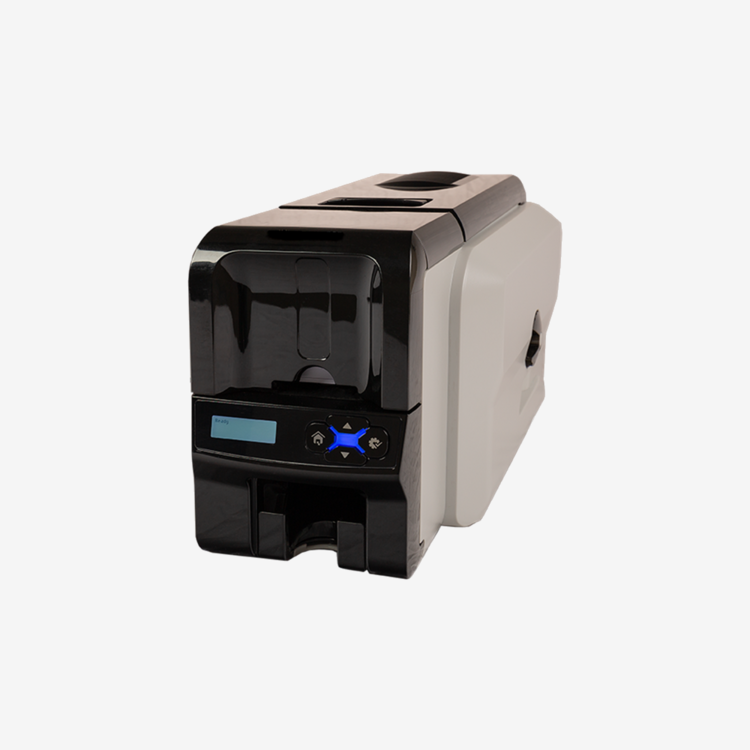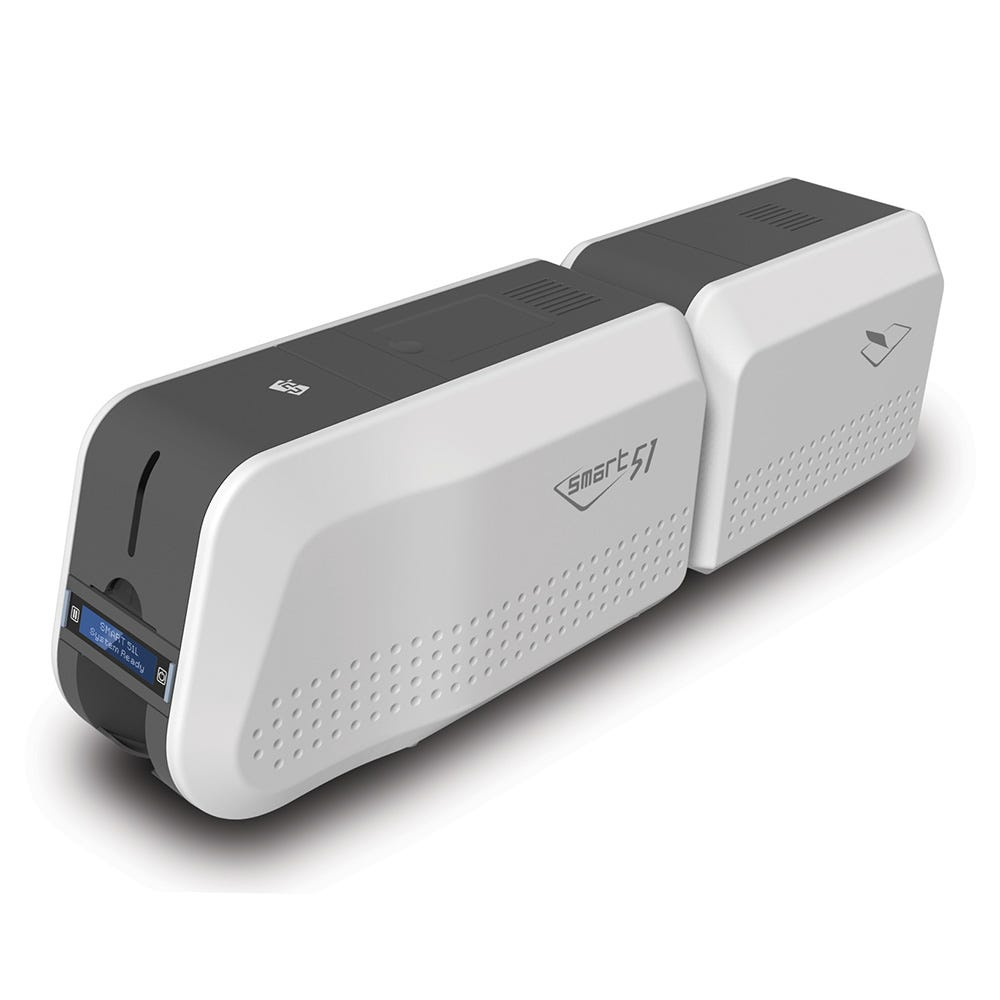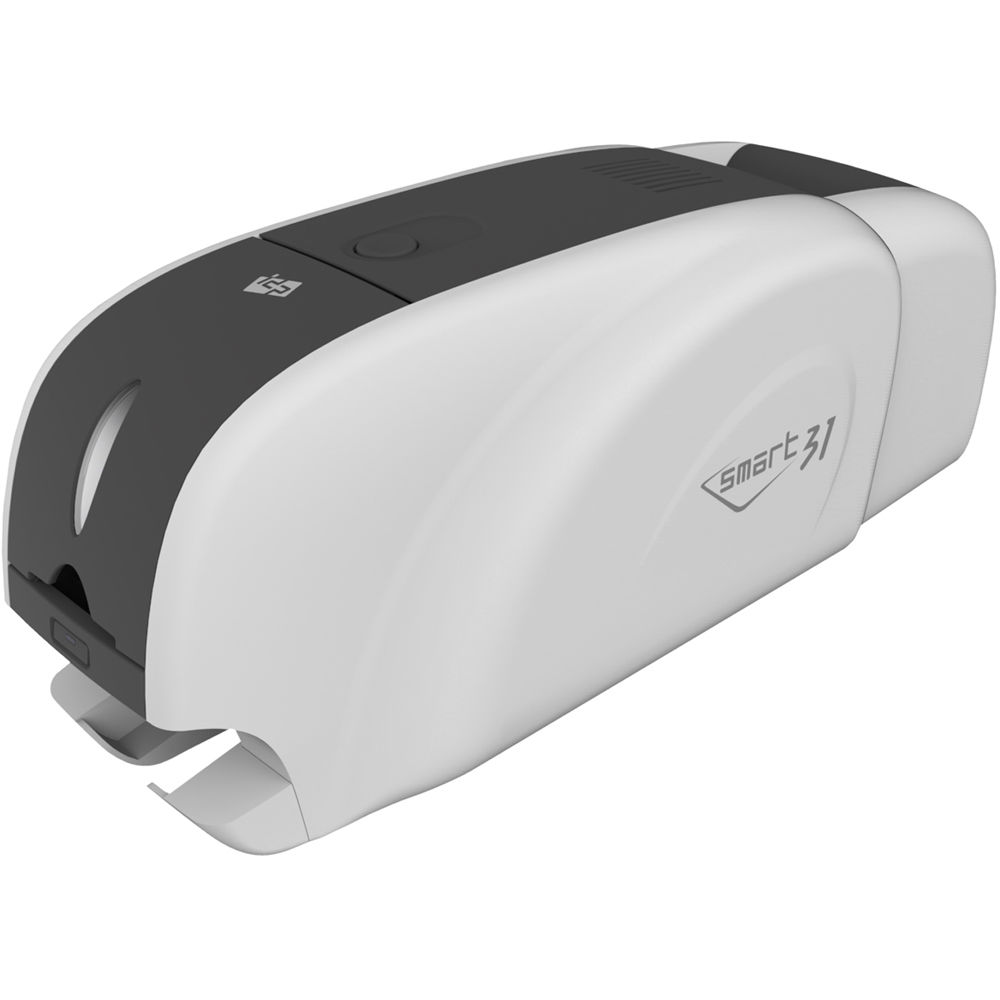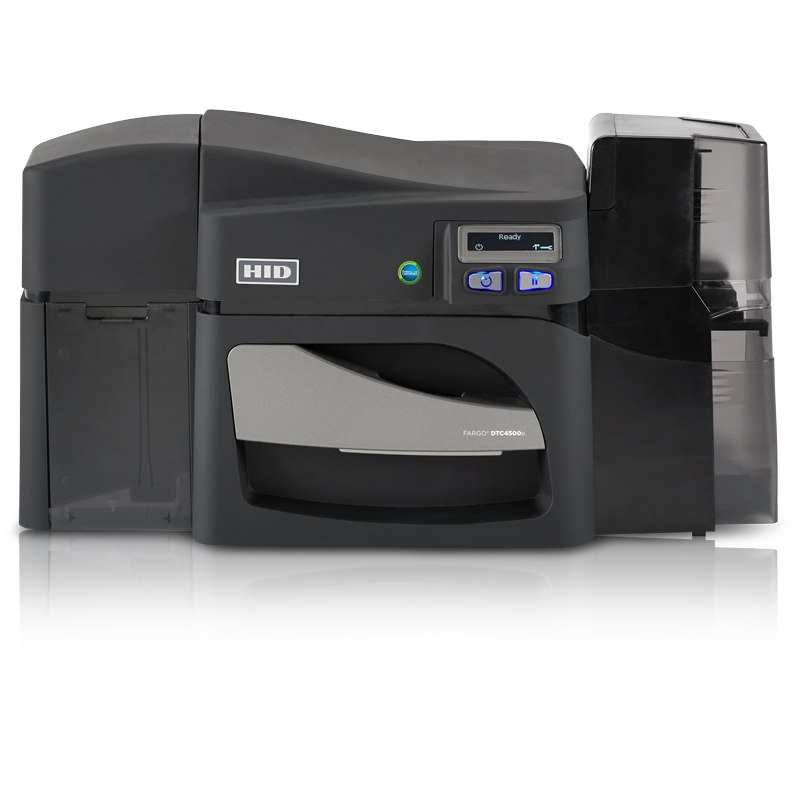Introduction
ID card printers have become essential tools for businesses, educational institutions, healthcare facilities, and government agencies. These devices streamline the process of creating professional, secure identification cards on-site. Whether for employee badges, student IDs, membership cards, or access control, an ID card printer offers efficiency and convenience. This comprehensive guide will delve into the world of ID card printers, exploring their features, advantages, and top models on the market. By the end of this article, you will have all the information needed to make an informed decision.
Understanding ID Card Printers
What is an ID Card Printer?
An ID card printer is a specialized machine designed to print identification cards. Unlike regular printers, these devices use advanced printing technologies to produce durable, high-quality cards. They can print on various card materials, including PVC, composite materials, and even some forms of biodegradable plastics.
- Types of Printing Technologies: The two primary technologies used in ID card printers are dye-sublimation and direct-to-card (DTC) printing. Dye-sublimation printers use heat to transfer dye onto the card, creating vibrant images and text. DTC printers print directly onto the card surface, offering sharp and clear prints.
- Customization: ID card printers can customize cards with photos, text, barcodes, QR codes, and even embedded security features like holograms and smart chips. This versatility makes them ideal for a wide range of applications.
Applications of ID Card Printers
ID card printers are used across various industries for diverse applications, each requiring specific features and capabilities.
- Corporate Sector: Businesses use ID card printers to create employee badges, visitor passes, and access cards. These cards enhance security and streamline administrative processes.
- Educational Institutions: Schools, colleges, and universities utilize ID card printers for student IDs, library cards, and event passes. These cards help manage access and provide identification.
- Healthcare Facilities: Hospitals and clinics use ID card printers to create staff badges, patient records, and visitor passes. These cards improve security and streamline patient management.
- Government Agencies: Government bodies issue ID cards for employees, contractors, and citizens. These cards often include advanced security features to prevent counterfeiting and ensure authenticity.
- Membership Clubs and Events: Gyms, clubs, and event organizers use ID card printers to create membership cards and event passes. These cards provide access control and enhance the member experience.
Advantages of Using ID Card Printers
The benefits of using ID card printers extend far beyond simply printing cards. They provide several advantages that enhance security, efficiency, and professional appearance.
- Enhanced Security: ID cards produced by specialized printers can include various security features. These features deter counterfeiting and unauthorized access. Options like holograms, watermarks, UV printing, and smart chips add layers of security.
- On-Site Production: With an ID card printer, you can produce cards on-site and on-demand. This capability provides faster turnaround times and reduces dependency on third-party providers.
- Cost-Effective: In the long run, having your own ID card printer can be more cost-effective than outsourcing. It eliminates the need for recurring service fees and bulk order commitments.
- Customization and Personalization: ID card printers offer high levels of customization. They allow you to include personalized information, photos, and company branding on each card.
- Professional Quality: Modern ID card printers produce high-resolution, professional-quality cards. These cards are durable and maintain their appearance over time.
Key Features to Look for in an ID Card Printer
Printing Technology
Understanding the printing technology is crucial when selecting an ID card printer. The two main methods, dye-sublimation and direct-to-card (DTC), offer different benefits and suit various applications.
- Dye-Sublimation: This technology uses heat to transfer dye onto the card. It’s ideal for printing high-quality images and detailed graphics. Dye-sublimation printers are often used for photo IDs and cards needing vibrant, full-color images.
- Direct-to-Card (DTC): DTC printers print directly onto the surface of the card. They are generally faster and less expensive than dye-sublimation printers. They are suitable for text, barcodes, and simple graphics. However, the quality may not match that of dye-sublimation printers for photo-heavy designs.
Card Types and Compatibility
Ensure that the printer you choose is compatible with the types of cards you plan to use. Some printers only work with standard PVC cards. Others can handle composite materials, biodegradable options, and cards with embedded technology like RFID chips or magnetic stripes.
Print Speed and Volume
Consider the print speed and volume capabilities of the printer. These factors are especially important for organizations with high ID card issuance rates.
- Print Speed: Print speed is usually measured in cards per hour. Faster printers can produce large batches of cards quickly, which is essential for big events or institutions.
- Print Volume: Some printers are designed for low-volume use, while others can handle high-volume production. Assess your organization’s needs to choose a printer that meets your output requirements.
Security Features
Security is a paramount concern for most organizations using ID card printers. Look for models that offer enhanced security features.
- Holograms and Watermarks: These features are difficult to replicate and provide an added layer of security against counterfeiting.
- UV Printing: This technique adds hidden images or text that are only visible under UV light, providing covert security measures.
- Smart Card Encoding: Some printers can encode smart cards with RFID chips or magnetic stripes. This functionality is crucial for organizations requiring access control or contactless payment features.
Software Compatibility
The compatibility of the ID card printer with card design software is another critical factor. Most printers come with proprietary software that allows you to design and print cards easily.
- Integrated Design Tools: Look for software with integrated design tools that allow you to create custom card templates, including photos, text, and graphics.
- Database Integration: Some software can integrate with existing databases. This feature simplifies importing and printing data for bulk card production.
Ease of Use and Maintenance
An easy-to-use printer will save time and reduce the learning curve for new users. Consider models with user-friendly interfaces, simple maintenance requirements, and reliable customer support.
- User Interface: A touchscreen interface or easy-to-navigate control panel can make operations more straightforward.
- Maintenance: Consider models with easy access to replaceable parts, like ink ribbons and card feeders. Regular maintenance should be simple to perform to keep the printer running smoothly.
Top ID Card Printers of 2023
Fargo HDP6600
Features and Benefits
The Fargo HDP6600 is a high-definition printer known for its superior print quality and advanced features. It is designed for high-volume, high-security environments.
- High Definition Printing: The HDP6600 uses retransfer printing technology, which provides high-resolution images and text. This technique ensures that the print quality is top-notch, making it suitable for detailed and vibrant cards.
- High-Speed Printing: Despite its high-quality print capabilities, the HDP6600 does not compromise on speed. It can produce up to 230 cards per hour, making it ideal for large organizations needing quick turnaround times.
- Advanced Security Features: The printer supports various security features, including holographic images, UV printing, and smart card encoding. These features help prevent counterfeiting and unauthorized access.
- Durability: The HDP6600 produces cards that are highly durable and resistant to wear and tear. This longevity ensures that the cards remain functional and visually appealing over time.
Why It Stands Out
The Fargo HDP6600 stands out for its combination of high-quality printing, speed, and security features. It is a top choice for organizations needing reliable and secure ID card printing. Its retransfer printing technology ensures excellent print quality, while its advanced security features provide peace of mind.
Zebra ZXP Series 7
Features and Benefits
The Zebra ZXP Series 7 is known for its robust performance and versatility. It is designed to handle a wide range of printing applications, from basic employee IDs to advanced access control cards.
- Versatility: The ZXP Series 7 supports a wide range of card types, including PVC, composite, and smart cards. This versatility makes it suitable for various applications.
- High-Speed Printing: The printer offers fast print speeds without compromising quality. It can produce over 250 cards per hour, making it ideal for high-volume environments.
- User-Friendly Design: The ZXP Series 7 features an intuitive interface, making it easy for users to operate. It also includes features like automatic ribbon detection and card thickness adjustment for added convenience.
- Durable Construction: The printer is built with high-quality materials, ensuring long-lasting performance. It is designed to withstand the demands of busy environments.
Why It Stands Out
The Zebra ZXP Series 7 stands out for its versatility and ease of use. It offers a balance of speed, quality, and user-friendly features, making it a reliable choice for various printing needs. Its ability to handle different card types and advanced security features further enhance its appeal.
Evolis Primacy
Features and Benefits
The Evolis Primacy is a popular choice for organizations needing a reliable and efficient ID card printer. It combines high-performance printing with user-friendly features, making it ideal for a wide range of applications.
- High-Quality Printing: The Primacy offers high-resolution printing, ensuring that images and text are sharp and clear. It is suitable for detailed and vibrant card designs.
- Fast Print Speeds: The printer can produce up to 225 color cards or 1,000 monochrome cards per hour. This speed makes it ideal for organizations needing quick turnaround times.
- Ease of Use: The Primacy features a user-friendly design, with an intuitive interface and easy-to-replace consumables. It also supports USB and Ethernet connectivity for added convenience.
- Advanced Security Options: The printer offers various security features, such as encoding options for magnetic stripes, contactless cards, and smart cards. These features enhance card security and functionality.
Why It Stands Out
The Evolis Primacy stands out for its combination of high-performance printing, fast speeds, and ease of use. It is a versatile and reliable choice for various printing needs, from basic IDs to advanced access control cards. Its user-friendly design and advanced security features make it a top pick for many organizations.
Magicard Enduro 3E
Features and Benefits
The Magicard Enduro 3E is known for its reliability and security features. It is designed for organizations needing secure and affordable ID card printing.
- Reliable Performance: The Enduro 3E offers consistent and reliable printing, ensuring high-quality cards every time. It is suitable for both color and monochrome printing.
- Security Features: The printer includes built-in security features, such as the Magicard HoloKote, which prints a secure watermark on each card. This feature helps prevent counterfeiting and enhances card security.
- User-Friendly Design: The Enduro 3E features an intuitive interface and simple maintenance requirements. It supports USB and Ethernet connectivity for easy integration into existing systems.
- Versatility: The printer can handle a wide range of card types and sizes, making it suitable for various applications. It also supports encoding options for magnetic stripes and smart cards.
Why It Stands Out
The Magicard Enduro 3E stands out for its focus on security and reliability. It offers built-in security features that enhance card protection, making it ideal for organizations needing secure ID cards. Its user-friendly design and versatility further enhance its appeal, making it a reliable choice for various printing needs.
How to Choose the Right ID Card Printer
Assess Your Needs
Before selecting an ID card printer, assess your organization’s specific needs. Consider factors such as the volume of cards you need to print, the types of cards required, and any specific security features needed.
- Print Volume: Determine the number of cards you need to produce regularly. Choose a printer that meets your volume requirements without compromising quality or speed.
- Card Types: Consider the types of cards you need, such as basic IDs, access control cards, or membership cards. Ensure the printer you choose supports the necessary card types and features.
- Security Requirements: Assess your organization’s security needs and choose a printer that offers the necessary security features, such as holograms, UV printing, and smart card encoding.
Evaluate Printer Features
Evaluate the features of different ID card printers to find the one that best meets your needs. Consider factors such as printing technology, resolution, print speed, and security options.
- Printing Technology: Choose between dye-sublimation and direct-to-card (DTC) printing based on your quality and speed requirements.
- Resolution: Higher resolution printers produce sharper and more detailed images and text. Consider the resolution needed for your specific applications.
- Print Speed: Look for printers that offer the necessary print speed to meet your volume requirements. Faster printers are ideal for high-volume environments.
- Security Features: Consider the security features offered by different printers and choose the one that provides the necessary protection for your cards.
Consider Ease of Use and Maintenance
Choose a printer that is easy to use and maintain. Look for models with user-friendly interfaces, simple maintenance requirements, and reliable customer support.
- User Interface: A touchscreen interface or easy-to-navigate control panel can make operations more straightforward.
- Maintenance: Consider models with easy access to replaceable parts, like ink ribbons and card feeders. Regular maintenance should be simple to perform to keep the printer running smoothly.
Compare Pricing and Value
Consider the cost of the printer and the value it offers. Look for models that provide the best balance of features, performance, and price.
- Initial Cost vs. Long-Term Value: Consider the initial cost of the printer and the long-term value it offers. A more expensive printer with better features and durability may provide better value over time.
- Consumable Costs: Factor in the cost of consumables, such as ink ribbons, cards, and maintenance kits. Choose a printer that offers affordable consumables to reduce long-term expenses.
Conclusion
ID card printers have become indispensable tools for organizations seeking to enhance security, improve efficiency, and produce professional-quality identification cards. This comprehensive guide has explored the world of ID card printers, delving into their features, advantages, and top models on the market. From understanding the basics of ID card printing to evaluating the top models and assessing your specific needs, this guide aims to provide you with all the information needed to make an informed decision.
Whether you choose the Fargo HDP6600 for its high-definition printing, the Zebra ZXP Series 7 for its versatility, the Evolis Primacy for its high-performance printing, or the Magicard Enduro 3E for its security features, you are guaranteed a top-tier printing experience. ID card printers offer a range of features and capabilities that cater to various applications, making them valuable tools for businesses, educational institutions, healthcare facilities, government agencies, and more.
In this comprehensive guide, we’ve covered everything you need to know about ID card printers, from their key features and benefits to top models and how to choose the right one. By understanding the different printing technologies, assessing your specific needs, and evaluating the features and value of different models, you can make an informed decision and invest in an ID card printer that meets your organization’s requirements and enhances your operational efficiency. Happy printing!



